Nitrogen Deficiency In Cannabis Plants
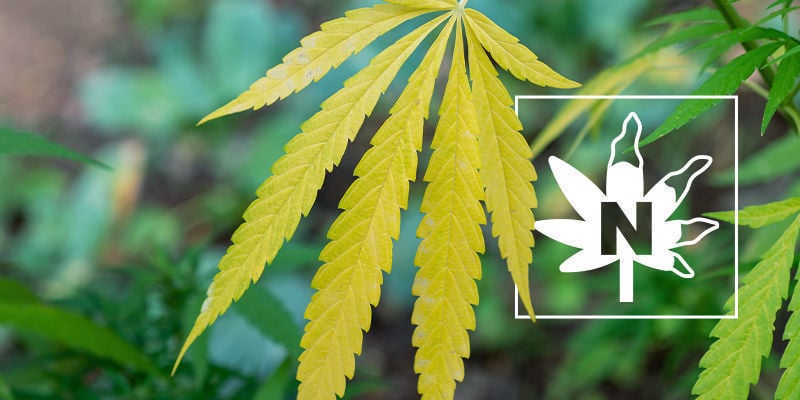
As one of the primary nutrients involved in growing cannabis, nitrogen is a hugely important factor in the overall health of your plants. However, sometimes plants can experience a deficiency, which can have detrimental, occasionally irrevocable, effects. So as you can probably imagine, catching the problem before it has a chance to cause damage is of the highest importance.
In this article, we detail everything you need to know about nitrogen deficiency and how to avoid it, but also how to spot and remedy it should you notice your plants suffering.
What causes nitrogen deficiency?
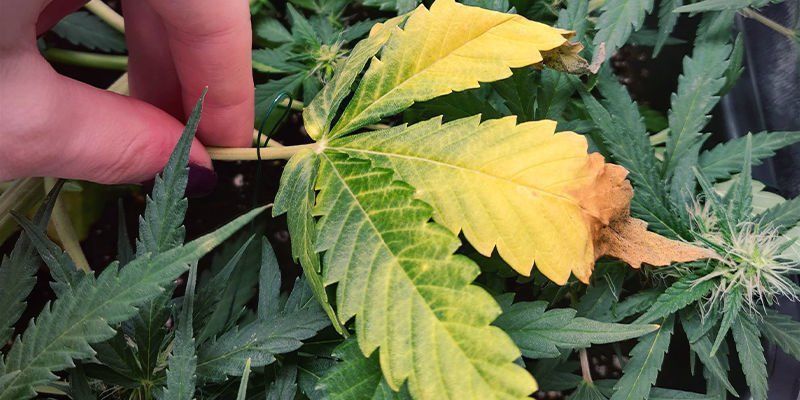
As you may have guessed, a nitrogen deficiency is typically caused by not administering enough nitrogen. Particularly during the vegetative stage, not supplying enough N can lead to underperforming plants, so you need to make sure your plants are getting enough—whether in the form of organic matter or commercial nutrients.
However, underfeeding is not the only cause of nitrogen deficiency. It can also occur as a result of nutrient lockout, pH problems, and issues with the root system.
Concerning the latter, having a rootbound plant will stop the specimen from absorbing any nutrients, and is a surefire way to cause damage. Be sure to choose a container big enough to comfortably house each specimen.
Nutrient lockout can occur as a result of overfeeding and/or pH problems. In the case of the former, administering too much commercial fetiliser to your substrate can actually prevent your plants from using it. And likewise, if the pH of your substrate or fetiliser is off, your plants won’t be able to uptake nitrogen even if you administered the perfect amount. To rectify nutrient lockout, you will need to flush your plants with pure, pH-balanced water before attempting to reintroduce nutrients.
How to recognise nitrogen deficiency
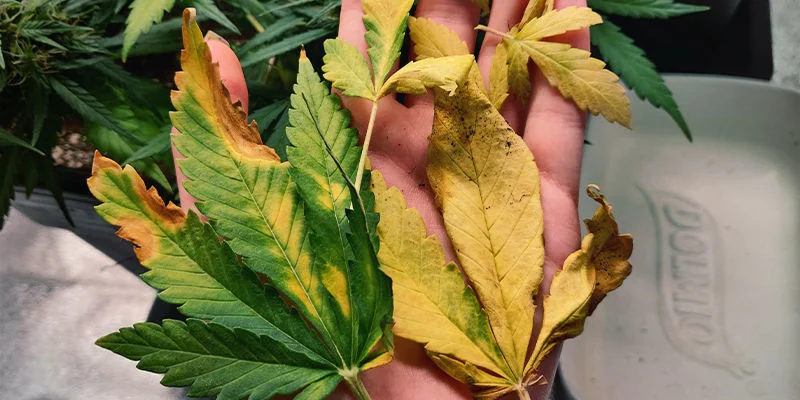
Now you know the causes, but how do you recognise symptoms of nitrogen deficiency should they rear their ugly head?
Nitrogen deficiency can manifest in a number of ways. The main symptom is yellowing (chlorosis) of the older leaves located toward the lower part of the plant. But why the older leaves and not the newer, fresher ones at the top? Because nitrogen is a mobile nutrient; your cannabis plant actually takes the nitrogen from the older leaves to feed the ones at the top. If you don't look to remedy the problem, all of the leaves will eventually wilt and die, so keep a keen eye on your plants for this obvious symptom.
Another symptom of nitrogen deficiency is slower-growing leaves that are sparse in their positioning. Although it's quite a small symptom to notice, it could make all the difference in catching a deficiency and preventing further damage or stunted growth.
Progress of nitrogen deficiency
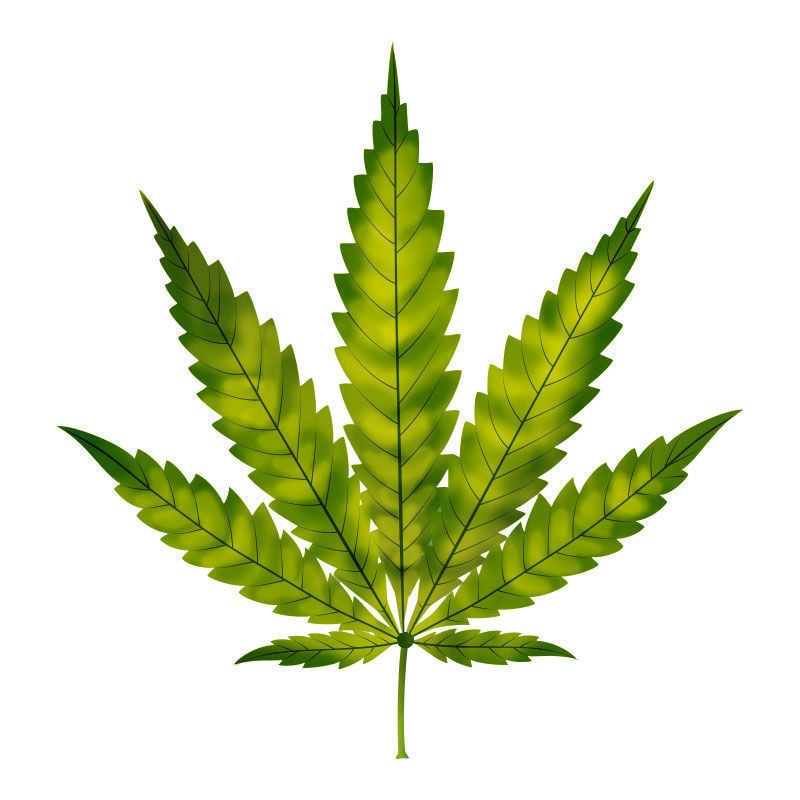
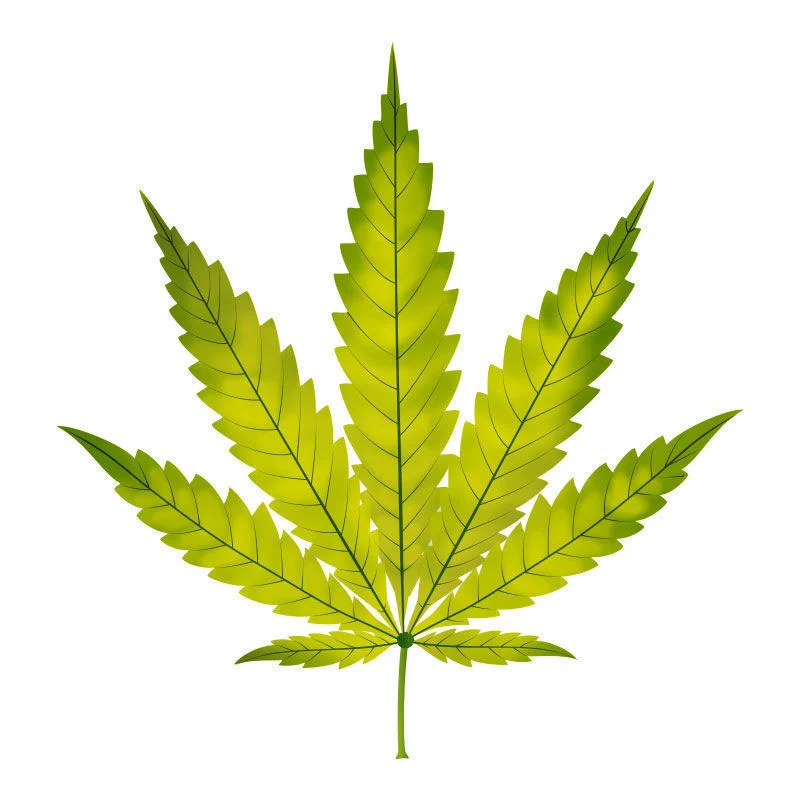
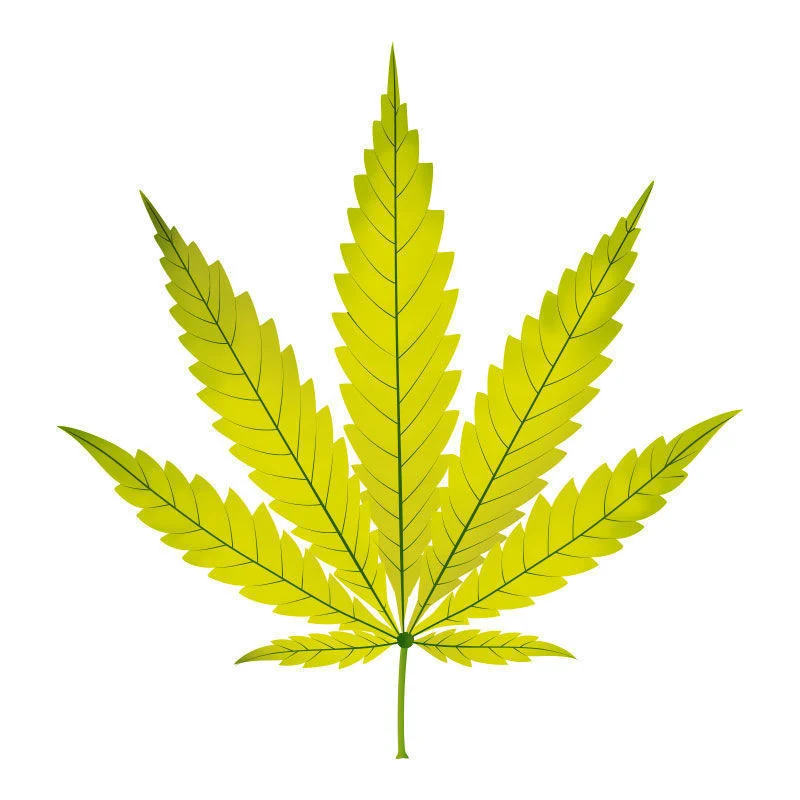
Of course, chlorosis won't instantly happen as soon as you turn your back; there is a progression of visual signs to be wary of in order to nip the issue in the bud.
Green leaves
As expected, healthy leaves are green leaves. An even, vibrant green colour means your plants are getting enough nutrients and water. With no spots, no burns, and no yellowing, this is essentially the benchmark for your plant throughout its growing cycle.
Early-stage nitrogen deficiency
In its early stages, you'll see the leaves of the plant begin to yellow between the veins. While the outer regions will remain green, the discolouration will become more apparent. This is known as interveinal chlorosis.
Progressed-stage nitrogen deficiency
This is the stage in which yellowing progresses through the leaves to the outside. As mentioned, this is more likely to impact leaves located toward the base of the plant. They will also begin to droop and eventually drop off the plant if no intervention takes place.
What nitrogen deficiency looks like in cannabis
While we can give some examples of what to keep an eye out for when it comes to nitrogen deficiency, it's really best to see for yourself. What follows is a selection of real photos of cannabis plants that have been affected by a nitrogen deficiency.
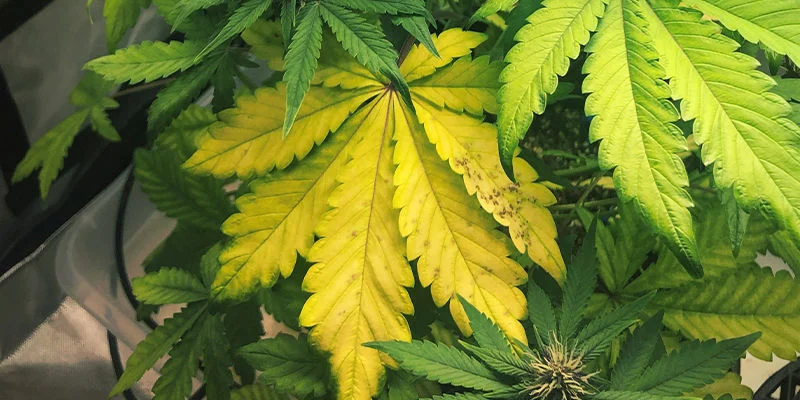
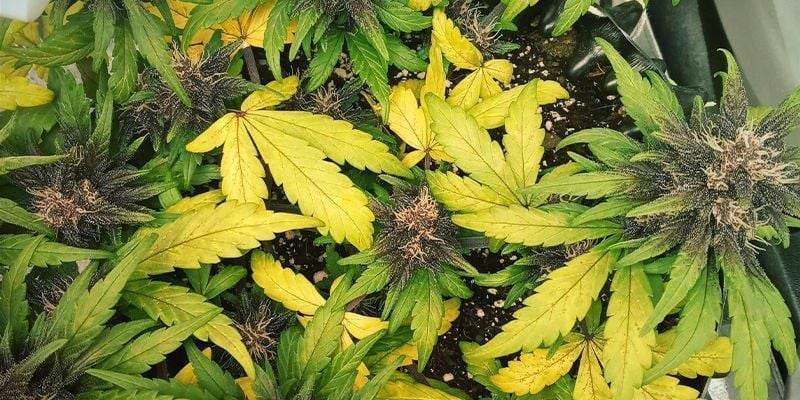
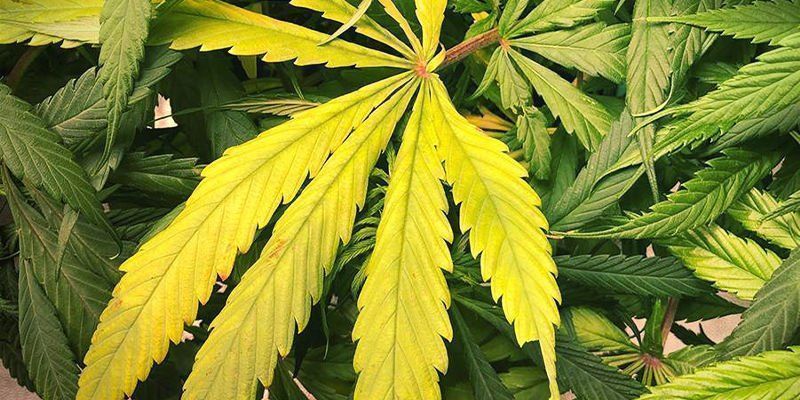
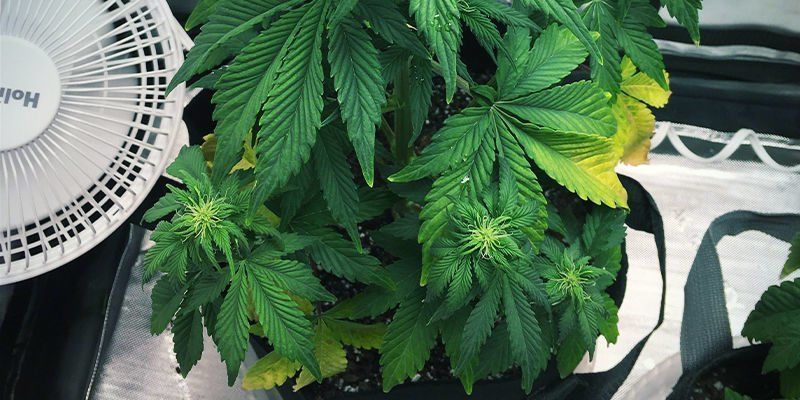
How to treat nitrogen deficiency
You'll be pleased to know that nitrogen deficiency is a relatively easy problem to fix.
Essentially, it's about providing the lost nitrogen as quickly as you can, in a regulated manner. After all, giving your plant too much nitrogen can have even more detrimental effects than giving too little. If your plant is suffering from root issues, salt accumulation, or nutrient lockout, it's hugely important to flush the plant with pure water before adding any more nitrogen into the mix. Flushing the substrate will give you a level playing field to finely tune the nutrients you add.
Nitrogen sources come in all shapes and sizes. The most obvious option is to pick up a liquid NPK fertiliser and follow the instructions. However, it's not just synthetic solutions you can use. There are many organic nitrogen sources, such as chicken manure, grass clippings, and even coffee grounds. Just be sure not to overdo it.
Is nitrogen deficiency always bad?
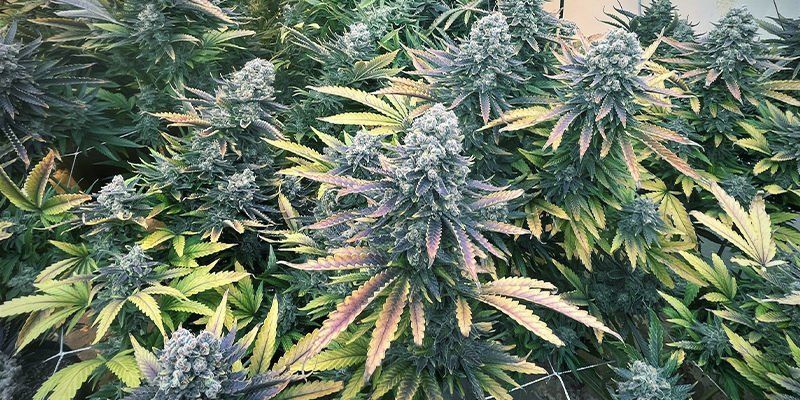
Believe it or not, nitrogen deficiencies aren't always a bad thing for your weed plants. This might not make sense after spending all this time explaining the symptoms and treatments, but there are times during a weed plant’s life cycle when nitrogen isn’t as important; for example, the late flowering stage. It’s true that a lack of nitrogen can stress your plants, but it is unlikely to cause any lasting damage if dealt with. Some growers even purposefully stress their plants to maximise yields and performance.
To put things in perspective, an overabundance of nitrogen is likely to be more harmful to a plant than an underabundance. Particularly during bloom, too much nitrogen is said to lead to a grassy taste in the buds, which you definitely want to avoid.
Make nitrogen deficiencies a thing of the past
As you can see, while nitrogen deficiencies can be a problem, it's generally only when they're left untreated. Fortunately, this deficiency is relatively easy to diagnose and fix, even for more inexperienced cannabis cultivators. So if you see your plant beginning to yellow at the leaves, take the time to investigate the problem. You'll be surprised at just how easy it is to get your plants back on track.




 Seedshop
Seedshop Headshop
Headshop Vaporshop
Vaporshop Healthshop
Healthshop Smartshop
Smartshop Shroomshop
Shroomshop Plantshop
Plantshop United States
United States













